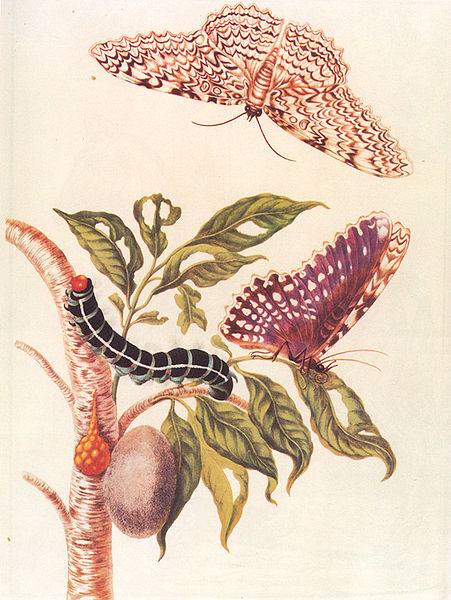In those gardens, Merian began studying insects, particularly the lifecycle of caterpillars and butterflies. The scholars of the time believed that insects came from "spontaneous generation of rotting mud", an Aristotelian idea held in spite of—or perhaps because of—the teachings of the Catholic Church. Although St Thomas Aquinas concluded that spontaneous generation of insects was the work of the Devil, Pope Innocent V in the thirteenth century had declared that belief in spontaneous generation went against Church teachings, since all life was created in the first days of Creation chronicled in Genesis; however, the Greek tradition prevailed in the scientific community. Against the prevailing opinion, Merian studied what actually happened in the transformation of caterpillars into butterflies. She took note of the transformations, along with the details of the chrysalises and plants that they used to feed themselves, and illustrated all the stages of their development in her sketch book.

In her time, it was very unusual that someone would be genuinely interested in insects, which had a bad reputation and were colloquially called "beasts of the devil." As a consequence of their reputation, the metamorphosis of these animals was largely unknown. Merian described the life cycles of 186 insect species, amassing evidence that contradicted the contemporary notion that insects were "born of mud" by spontaneous generation.
| Born | 2 April 1647 Frankfurt, Germany |
|---|---|
| Died | 3 January 1717 (aged 69) Amsterdam, Netherlands |
| Occupation | Naturalist, scientific illustrator, entomologist |
| Known for | Documentation of butterfly metamorphosis, scientific illustration |



No comments:
Post a Comment